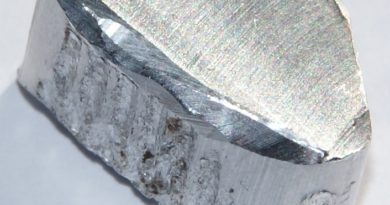Improvement of fatigue life of aluminium alloys by 25 times
Published in the journal Nature Communications, a research work done by Monash University engineers has demonstrated improvements in the fatigue life of high strength aluminium alloys by 25 times – a significant outcome for the transport manufacturing industry.
The engineers demonstrated that the poor fatigue performance of high strength aluminium alloys was caused by weak links called ‘precipitate free zones’.
The team led by Christopher Hutchinson, a Professor of Materials Science and Engineering at Monash University in Australia, was able to make aluminium alloy microstructures that can heal the weak links while in operation ie a form of self-healing.
The improvement in the lifetime of high strength aluminium alloys could be 25 times compared to current state-of-the-art alloys.
Aluminium alloys compared to steel, are light (1/3 of the density), non-magnetic and have excellent corrosion resistance. Aluminium alloys are important for transport applications because they are light, which improves fuel efficiency. But, their fatigue properties are notoriously poor compared to steel of similar strength.
Professor Hutchinson said “Eighty per cent of all engineering alloy failures are due to fatigue. Fatigue is failure due to an alternating stress and is a big deal in the manufacturing and engineering industry. Think of taking a metal paperclip in your hands and trying to break the metal. One cannot. However, if you bend it one way, then the other, and back and forth a number of times, the metal will break. This is failure by fatigue and it’s an important consideration for all materials used in transport applications, such as trains, cars, trucks and planes.”
Using commercially available AA2024, AA6061 and AA7050 aluminium alloys, researchers used the mechanical energy imparted into the materials during the early cycles of fatigue to heal the weak points in the microstructure, the PFZs. This strongly delayed the localisation of plasticity and the initiation of fatigue cracks, and saw enhanced fatigue lives and strengths.
Professor Hutchinson said “Our research has demonstrated a conceptual change in the microstructural design of aluminium alloys for dynamic loading applications. Instead of designing a strong microstructure and hoping it remains stable for as long as possible during fatigue loading, we recognised that the microstructure will be changed by the dynamic loading and, hence, designed a starting microstructure (that may have lower static strength) that will change in such a way that its fatigue performance is significantly improved.”




